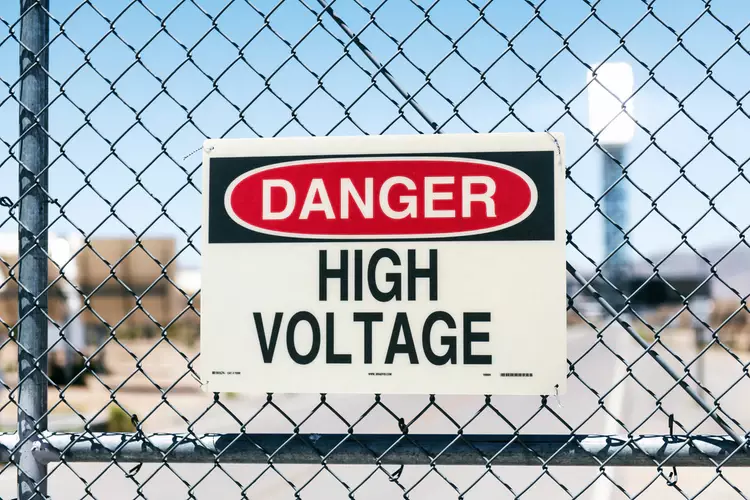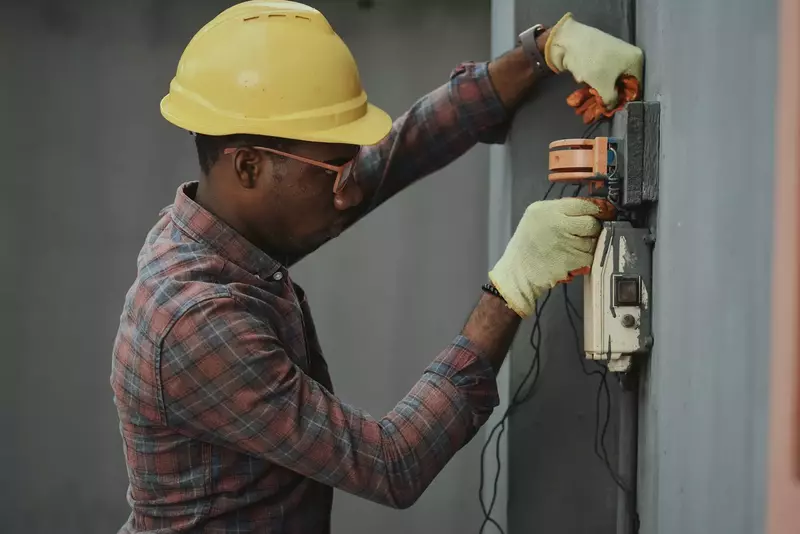Electrical hazards in the workplace present a severe threat to the safety of workers. One disturbing fact is that many workers are unaware of the potential danger electricity can bring to the work environment. This lack of knowledge makes them more vulnerable to electricity-related accidents and electrocution.
Electrical injuries that might come from the overloading of the 220 extension cord pose a serious health and safety issue in the workplace. Between 1992 and 2013, there were approximately 6000 fatal electrical injuries to US workers. And, from 2003 through to 2012, there were about 24.100 non-fatal electrical injuries. Every week, nearly five workers get electrocuted in the workplace, which is 12% of the workplace’s young workers’ deaths. To the male youth in Upper Egypt, electrical accidents and injuries represent 8.7% of all accidents.
Therefore, because of these reasons, there’s a need for implementing electrical safety procedures in the workplace. There are five tips for electrical safety at the workplace you can implement, including:
- Electrical safety standards and regulations
- Electrical safety program implementation
- Electrical Safety with proper personal protective equipment (PPE)
- Routine checks and maintenance
- Safety by design
Here’s a detailed guide on these tips
Table of Contents
1. Electrical safety standards and regulations
The first essential tip to electrical safety at the workplace is knowing, understanding, and following safety standards and regulations. The Occupational Safety and Safety Administration (OSHA) provide the laws (PDF) that ensure safe working conditions for workers at the workplace. It does this by enforcing standards, regulations, and the provision of training, education, outreach, and help.
The 1970 OSHA Act requires employers to provide their workers with a hazard-free workplace. These are hazards that could cause physical harm or death. Thus, hazards such as arc blast, arc flash, and electrical shock apply here, even though the act doesn’t expressly state it.
A general rule is to avoid working hot because of these regulations. In addition, OSHA 1910.333 (a) (1) requires de-energizing live parts before employees work near or on them. However, it would not be ideal if de-energization presents an additional hazard or infeasibility because of operational limitations or equipment design.
It’s vital to understand that convenience, production concerns, or financial reasons aren’t acceptable reasons for working on hot equipment. Failure to follow this OSHA requirement can cause a criminal indictment or fines.
2. Electrical safety program implementation
We should never use electricity unless it is necessary. It is the guiding principle of the Electrical Safety Program. In addition, it instructs employees to de-energize live parts before working with them unless one of the following applies:
- De-energizing increases safety hazards. For example, the shutdown of a hazardous location ventilation system or deactivation of emergency alarm systems.
- The operation of live parts at less than 50 volts to the ground with no rise in exposure leads to electrical burns and explosions because of electrical arcs.
- De-energization might not be possible because of operational limitations or equipment designs.
Steps to create an electrical safety program
Here are sections to consider while looking to implement the electrical safety program:
- Purpose
The purpose of the program provides an essential safety requirement for workers that work near or on electrical apparatus
- Scope
The scope states that everyone involved in electrical duties has to follow the document.
- Responsibilities
In this section, you have to establish management responsibilities and qualified persons, escorts, qualified persons, or anyone that may work with or for you.
- Requirements
It includes requirements such as the required training and experience and a framework for setting parameters for qualified candidates.
- Protective measures
This section addresses tools and PPEs. It establishes the minimum PPE requirements for staff.
- Required safe work practices
A labor-intensive section because it involves the outlining of safe work practice parameters covering a variety of topics.
- Training
Training is vital to keep your staff labor-intensive safe and plays an essential role in keeping your team updated in every aspect of their daily work.
- Audits
It’s also essential to audit the program to review if it’s still OSHA compliant.
3. Electrical Safety with proper personal protective equipment (PPE)
Whether you represent electrical, manufacturing, or oil and gas, production and safety managers face various challenges that concern PPE’s. While they put several laws and regulations in place to ensure the safety of workers, safety representatives find it challenging to invent programs that provide productivity and efficiency.
Here are five tips to improve electrical safety at the workplace with PPEs.
- Understanding the purpose of your PPEs
- Knowing the situations that require the usage of PPEs
- Designing a PPE program
- Understanding the steps to select the appropriate PPE for the work environment
- Performing regular maintenance inspections for the PPE’s
4. Electrical safety routine checks and maintenance
OSHA standards have a requirement of the workplace to ensure that it’s free from electrical exposure hazards. You can achieve electrical. You can achieve electrical safety in the workplace through:
- NFPA 70 – the National Electrical Code adherence of the applicable installation requirements
- Implementation of electrical safe work practices in the workplace from the NFPA70B
- The maintenance of electrical equipment according to NFPA 70B – the Recommended Practice for Electrical Equipment Maintenance
These documents are a representation of a three-legged stool supporting electrical safety in the workplace. If you remove one, the seat falls. The falling represents the failure of effective electrical safety maintenance in the workplace.
Some of the routine maintenance you can carry out includes:
- checking cords and extensions
- ensuring plugs fit the outlets
- checking outlets
- ensuring we turn all electrical appliances off at the end of the day
- avoiding the use of cracked or frayed cords
- checking the wattage of light bulbs
- unplugging out electrical appliances that have a strange smell
5. Electrical Safety by design
One of the electrical safety design considerations is isolating the circuit. Safety relies on the practical implementation of lockout/tag-out procedures using isolation equipment to eliminate breakdowns during preventive maintenance and repairs. In addition, it is crucial for motor loads and other types of loads that may be subject to isolation.
It would be best if we protect live parts from accidental contact with components or barriers. In routine maintenance and troubleshooting, components that prevent unintentional contact or are finger-safe provide increased protection against electrical shock and arc flash hazards.
Considering current limitations is also a critical part of electrical design safety. For example, besides reducing incident energy associated with arc faults, current-limiting overcurrent devices can often lower incident voltages.
Conclusion
In every job situation, specific requirements are unique. You can, however, ensure both your business and your people have protection by following the five tips for electrical safety at the workplace as outlined in this article.





One thought on “5 Tips for Electrical Safety at The Workplace”